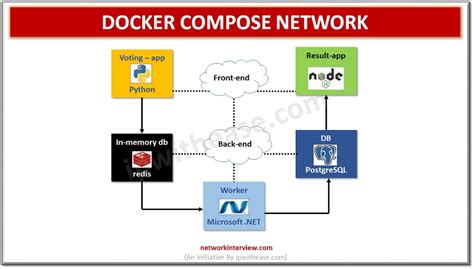When working with Docker, one of the key aspects of deploying applications is configuring the networking between containers. Docker Compose, a tool for defining and running multi-container Docker applications, provides a straightforward way to manage container networking. Host networking, in particular, allows containers to use the host's network stack, which can be beneficial for certain applications. In this article, we'll delve into the world of Docker Compose host networking, exploring its concepts, configurations, and practical applications.
Understanding Docker Networking Modes

Docker provides several networking modes for containers, including bridge, host, none, and overlay. The host mode, which is the focus of this discussion, allows a container to share the host’s network stack. This means that the container will use the host’s IP address and ports, enabling it to communicate directly with external networks without the need for port mapping. To achieve this with Docker Compose, you can specify the network_mode as host in your docker-compose.yml file.
Configuring Host Networking with Docker Compose
Configuring host networking in Docker Compose involves modifying the docker-compose.yml file to include the network_mode: "host" directive under the service you wish to configure. Here’s an example of how you might set up a simple web server using Nginx with host networking:
version: '3'
services:
web:
image: nginx
network_mode: "host"
restart: always
In this example, the Nginx container will use the host's network stack, allowing it to be accessed directly without needing to specify ports. However, it's essential to consider the implications of using host networking, as it can affect the security and portability of your application.
| Networking Mode | Description |
|---|---|
| Bridge | The default mode, where containers run in isolation and communicate through a virtual network bridge. |
| Host | Containers share the host's network stack, using the host's IP address and ports directly. |
| None | No networking is enabled for the container, isolating it completely. |
| Overlay | Used for swarm services, allowing containers to communicate across multiple hosts. |

Benefits and Considerations of Host Networking

The use of host networking in Docker Compose offers several benefits, including simplified port management and potentially improved performance by reducing the overhead of the bridge network. However, it also introduces considerations such as increased security risks due to the direct exposure of the container to the host’s network and potential port conflicts if multiple containers attempt to use the same port.
Security and Port Management
Security is a paramount concern when using host networking. Since the container shares the host’s network stack, any vulnerability in the container could potentially expose the host to risks. Furthermore, managing ports becomes critical to avoid conflicts between containers. A well-planned strategy for port allocation and robust security practices are essential when leveraging host networking.
Key Points
- Host networking allows containers to share the host's network stack, simplifying certain configurations but introducing security considerations.
- Docker Compose simplifies the configuration of host networking through the `network_mode: "host"` directive in the `docker-compose.yml` file.
- Understanding the different Docker networking modes (bridge, host, none, overlay) is crucial for designing and deploying applications effectively.
- Security and port management are critical when using host networking to prevent conflicts and ensure the isolation of containers.
- Performance can be improved with host networking by reducing the overhead associated with bridge networking.
Practical Applications and Examples
In practice, host networking can be particularly useful for applications that require low-latency, high-performance networking, such as real-time data processing or streaming services. For instance, a containerized video streaming service might benefit from host networking to minimize latency and ensure smooth playback.
Real-World Scenario: Containerized Video Streaming
Consider a scenario where you’re deploying a containerized video streaming service. The service requires direct access to the host’s network to minimize latency and ensure high-quality video playback. By configuring the service to use host networking in Docker Compose, you can achieve this while also simplifying the management of network ports and potentially improving performance.
However, it's also important to consider the potential downsides, such as the increased complexity of managing security and the potential for port conflicts if not properly planned.
What are the primary benefits of using host networking in Docker Compose?
+The primary benefits include simplified port management and potentially improved performance by reducing the overhead of the bridge network.
What are the security considerations when using host networking?
+Security considerations include the potential for increased vulnerability due to direct exposure to the host's network and the need for robust port management to prevent conflicts.
How do I configure host networking in Docker Compose?
+You can configure host networking by specifying `network_mode: "host"` in the service configuration of your `docker-compose.yml` file.
In conclusion, Docker Compose host networking is a powerful tool for managing container networks, offering benefits in terms of simplicity and performance. However, it requires careful consideration of security and port management to ensure safe and effective deployment. By understanding the concepts and configurations of host networking, developers and system administrators can leverage this capability to deploy high-performance, low-latency applications that meet the demands of today’s complex computing environments.
